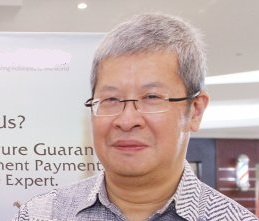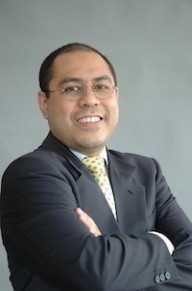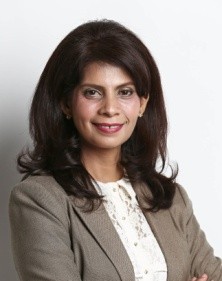Case Document
BLUE BIRD GROUP: A RELIABLE TRANSPORTATION PARTNER
The timeline of this case began in June of 2003, while Ms. Noni Sri Ayati Purnomo, Vice President of Business Development at the Blue Bird Group, was preparing her presentation for the company’s President Director. She had to make decision to improve the business process to comply with ANDAL – “aman, nyaman, mudah, and personalized” – translated to “safe, comfortable, accessible, and personalized”). Ended in 2004, the company developed and implemented the ERP system with several challenges, such as in maintenance process, inventory process, and also human resources.
PT EDPMEDIA: GO SIX SIGMA?
On August 2007, Mr. Eddie Cendana, the CEO, was very irritated when he received another complaint from one of the most important clients of PT Edpmedia Multimitra Primanusa. There were increasing complaints and dissatisfaction from customers over the last few months, so he decided to initiate the Six Sigma program to improve the quality for the company.
The Six Sigma project at PT EDPMEDIA started in January 2008 using the DMAIC 5 stages approach, namely Define, Measure, Analyze, Improve and Control. In the first stage, PT EDPMEDIA had set the CTQ (Critical to Quality) and CTP (Critical to Process) targets, which were based on results of the extensive customer and employee surveys. They had discovered that the CTQ and CTP issues were employees’ workload, productivity and training. The surveys proved that the three factors contribute the most significant percentage towards customer satisfaction and royalty. In the second stage, a number of measurement and capability tests were conducted. The results showed that the company must start immediate improvements to employee productivity. The analyzing stage indicates that the employee productivity figure was affected by:
- 45% - workload factor;
- 32.5% - lack of training;
- 30% - job satisfaction.
When the project neared the end of its implementation stage in early 2009, the company employee productivity had increased to 3.69 from the initial target of 3.5. Another related indicator such as Hour Service Rate had also increased close to 75% from the target of 70%. So the CEO claimed that the Six Sigma project initiative was successful though more improvements and optimal benefits were anticipated further in the future.
ASAHIMAS IN FACING THE OIL PRICE INCREMENT IN 2005 AND ITS EFFECT TO THE COMPANY BUSINESS
In 2006 Asahimas recorded net sales value of Rp 1.5 trillion or 10 % decreased compared to 2005. The increasing oil price was the culprit. Actually, the feasibility study to change the fuel for combustion process to natural gas had been done before 2005. Unluckily the increasing oil price advanced the progress of the project.
Then, early in 2006 the company established a task force team to continue the study of fuel conversion. The aim of the team was to reduce cost of production, the conversion should be done without loss of production, no materials in the flat glass process should be changed, and the project should be completed as soon as possible.
Despite the noble aim of the project, questions still remained for the management were : should they continue the conversion program ? Regarding the big value to invest, should they apply to all plants or not? What was the plan B if the conversion was done and the price of natural gas increased?
KORINDO HEAVY INDUSTRIES: SETTING A NEW DIRECTION (A)
In his new office at the Research and Development Division of PT Korindo Heavy Industry (KHI), Mr. Miet Sugiarso, the newly-appointed head of Research and Development, pondered about the challenges that he and his associates would have to face in the months ahead. He had just been in another meeting with the Board of Directors of KHI regarding the development of KHI’s newly formed automotive manufacturing division.
Several months before, sometime in late 2005, Sugiarso, along with his co-workers and friend, Puryanto, were invited to the offices of Korindo Heavy Industry by the company’s Board of Directors and offered positions to lead the development of a new business division for the manufacture and assembly of commercial vehicles. However, the company had never been involved in any project that was remotely close to automotive manufacturing.
Korindo Heavy Industry had been originally established to handle some of the manufacturing projects of the Korindo Group, a business conglomerate under which KHI operates. Originally, the Heavy Industry’s main business operation involved the manufacture of containers for shipping and transportation purposes. Within this industry, KHI prospered for nearly a decade before eventually being forced out of business due to competition from Chinese container manufacturing companies, as well as other external factors.
As the company declined, its directors began formulating plans to change the company’s core business towards more profitable ventures, which they hoped would be able to bring the company out of its current predicament, as well as provide them with new opportunities for growth. After much deliberation, the board of directors eventually decided to enter the automotive industry. A new course had been charted; what was needed next was to set the foundations for a successful take-off. The responsibility was offered to Sugiarso and his co-worker Puryanto, both of whom, had extensive knowledge of the automotive industry. They accepted the offer seeing it both as an opportunity and as a challenge, though, they realized that it would not be easy.
Korindo, having no prior experience in the motor the automotive industry meant that the company was ill-prepared to face the challenges of the new venture. Container manufacturing and motor vehicle manufacturing were completely different from each other. Many of its processes and systems would have to be rebuilt in order to meet the more stringent requirements of motor vehicle manufacturing. Furthermore, they faced the challenge of entering an industry that was already dominated by other more mature, and experienced players like Mitsubishi, Toyota, Hino, and others.
Meanwhile, there were pressures, from the Board of Directors, for the automotive manufacturing division to quickly begin its operations and to introduce and launch their first product within the next 6 months. Before that, Sugiarso and his team would have to first set up a working system as well as address critical issues such as a market penetration strategy, along with competitive strategies for their new products.
KORINDO HEAVY INDUSTRIES (B)
The redesign of the company was approved by the principals of the Korindo Group. The total investment was over USD 40 million; 33 million was allocated to equipping and redesigning the facilities, recruitment of necessary manpower, and the installation of new systems. The rest of the funds were allocated to the establishment of organizations that would support the operations of KHI. These organizations represent companies operating alongside KHI under the Korindo Group such as Korindo Motors, a distribution company, and Clemont Financial, a leasing company.
The second part of the case will show how Korindo Heavy Industry formulated and executed the new strategy of entering the automotive industry. Having a new vision and mission is important to communicate how the new company would be. It is also important to understand how the new vision was to be implemented.
PEGASE BY SDV INDONESIA
Since Mid 2007, SDV Indonesia had been working on different issues following the implementation of their information management system, called Pegase. Pegase is an ERP software package which aims to create clear processes for any operation related to SDV Indonesia. The information flow had to become transparent and efficient in order to improve the productivity of and respect for corporate regulations.
Pegase would change the whole organization in SDV; the way people work and solve problems. After a few weeks, it seemed that some people were not enjoying the process of change. The reluctance was so intense that even the General Director received threatening emails, and had to face a strike.
How should the management of SDV handle this process of change? How to solve the critical implementation phase? How should the management of SDV deal with the difference in work culture?
FIGHTING THE INDOCEMENT’S WAY
This case study examines the effects on the corporate culture of Indocement after Heidelberg Zement acquired the company after the 1998 monetary crisis. The crises ballooned Indocement’s debts and diminished sales due to decreased consumer spending and buying power. As a result, Mr. Kuky Permana, Indocement Core-T team leader, sought investors, and then convinced Heidelberg Zement to buy Indocement shares. At the same time, he had to work to preserve Indocement’s corporate culture.
In this case, participants are to analyze the market situation that affected organizational performance, the corporate cultures of Indocement and Heidelberg Zement, and to choose a culture merger strategy.
DO YOU KNOW THE BEST RESTAURANT AROUND HERE? REFER TO JALANSUTRA, ONLINE COMMUNITY “WISATA KULINER”
While observing the total traffic jam, Wasis Gunarto starts to explore the Internet and clicks jalansutra @yahoogroups.com. As the founding person in this community, it is his daily customary to monitor traffic discourse in the mailing list. His eyes concentrate on the membership number which has already passed 13,000, he mumbles/ this is no joke. Many different problems start coming up. Indeed, as it is explained by a certain reference on online community – the higher the number of an online community memberships, the more complicated and complex the problems that appear.
From his blackberry, Wasis sends SMS to the two Jalansutra principal moderators who are still very active accompanying him, they are Gatot Purwoko and Andrew Mulianto. Jalansutra mailing agent members have known Andrew Mulianto as a tour owner, since he owns a Travel Agency. So far both of them always have brilliant ideas in developing Jalansutra. Wasis thinks it is necessary to hold a meeting with these two colleagues.
FOOD, FUN AND FRIENDS: NATURAL COOKING CLUB (NCC) COMMUNITY
Community assembly is very easy to manage in this era where the Information and Communication Technology (ICT) grows very fast. With Internet, a group of people who possess same interest can be reached in a very short time.
One of the most radiant progresses from vast internet users in Indonesia in the year 2000 is discussion through mailing list. Mailing list in Indonesia is called ‘Milis’. Milis is a place where a group of people with same interest or people coming from the same community can discuss things.
Natural Cooking Club (NCC) is a club that consists of women who likes to cook. It’s one of many online communities that formed lately, that have succeeded in developing its activity. Beside the increasing amount of milis member (more than 7000 at the end of 2008), the members have received tangible and intangible use of this community.
One of NCC’s key of success is the perseverance of its founder in maintaining relationship with the member. “Togetherness” is the motto of this cooking club. Various scheduled offline gathering activities have become the place to gather and bridging virtual communication to face-to-face communication.
NCC existence and exposure is possible because of the help from moderators who have join commitment to develop the community. There are also members who have blog that have become a multiple information channel to society who aren’t aware of this community.
The issue for owner, Fatmah Bahalwan is how to maintain the ‘sense of community’ from its member. With the community’s development and the increasing amount of member, the owner is worried about the decreasing of emotional intensity that has been the core power of NCC.
ASTRO: A SHORT JOURNEY PAY-TV IN INDONESIA
The growth of local and national TV station (that can be watched without any cost, also known as free to air – FTA) apparently do not followed by the increasing of quality of the program. In other words, although the amount of TV stations and programs are increasing, it was not the case with public’s satisfaction. Most TV operators offer similar shows
TV viewers feels that they don’t have other choice of program to enjoy, thus they have to follow existing programs. There are many complaints regarding shows that have physical, social and psychological violence, also SARA (harassment toward certain community, child abuse and things that are far from norms, religion and morality) elements. Most of parents are complaining because the TV show are recklessly made and stressing on commercial elements without considering the consequences.
The emerging of Pay TV operators in Indonesia give viewer new alternative for interesting programs. Unfortunately, pay TV’s market has not been developed thoroughly especially by the market leader, Indovision. Viewers amount is very low compare to its potential.
There are some opinions about conflict of interest between Indovision and the group of company that owned Indovision – MNC, due to their mutual ownership of RCTI and other FTA. If Pay TV penetration is high, it will take the portion of the successful TV station (RCTI) in the same corporation. Thus, until today, Pay TV’s market in Indonesia is not as big as other developing countries.
Consequently, the emerging of Astro, a new brand of pay TV brought fresh air for pay TV industry. With a strong spirit to penetrate the market, this brand aggressively and continually give customer a clear reason that it is time to have a pay TV.
Astro Nusantara is a pay TV operated by PT Direct Vision since 28 February 2006, a joint venture between Astro All Asia Network plc and PT First Media Tbk, sub company of Lippo Group. There are 48 kinds of channel, including 5 local channels produce and displayed exclusively by Astro, which are: Astro Aruna, Astro Ceria, Astro Awani, Astro Kirana and Astro.
Astro TV’s aggressiveness emerged even more when it controversially get the English Premiere League (EPL) broadcast license. The program that is usually enjoyed freely by every layer of society because it’s broadcasted at FTA TV, now can only be enjoyed by Astro pay TV customers.
Indovision’s respond regarding the emerging of Astro in the market is to make it as a prominent competitor. Indovision’s commercial tries to emphasized on Astro’s insufficiency. Whereas as a market leader, it’s Indovison’s task to extend market penetration toward FTA despite of fellow pay TV.
Issue that is brought in this case is to resume whether Astro’s strategy to increase customer base with EPL is a positive act for Astro’s brand equity development. The increasing of viewers amount that is not equal to many negative comments about this brand in many kinds of media, especially Internet.
Before the EPL issue resolves, Astro’s management faced other complicated problem, that is conflict between the stockholder which cost the end of Astro pay TV’s operation in Indonesia.
The three years broadcast time is filled by dynamics for Astro. As a new developed brand, it has to be taken from viewers that begin to feel the connection to the brand.







